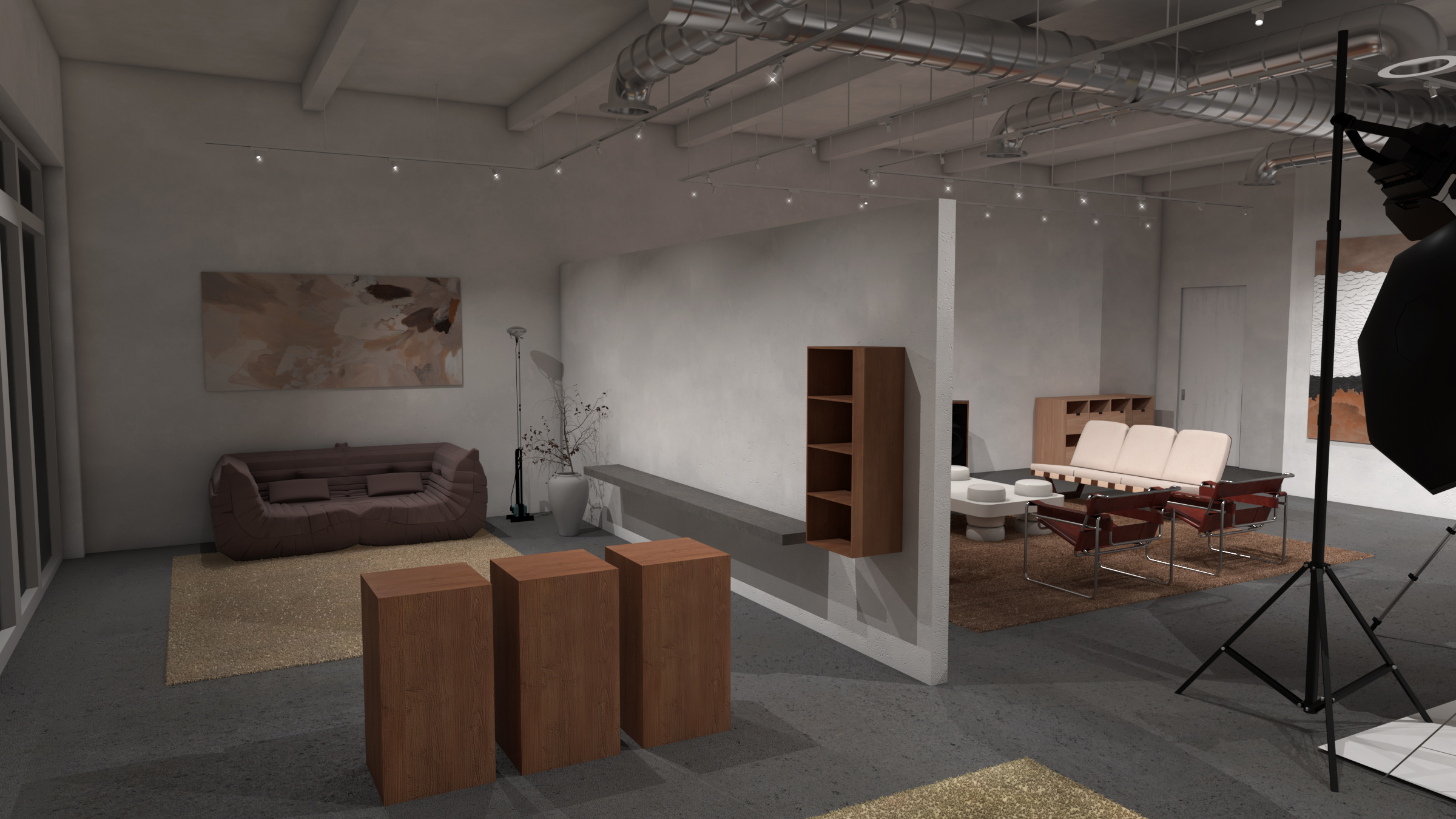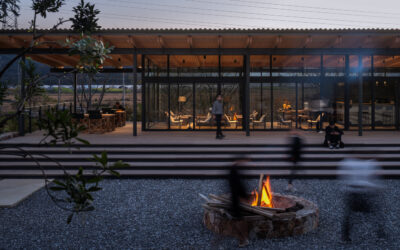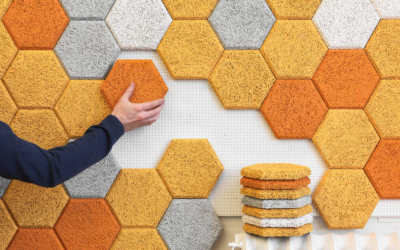Decorating Inspiration: Minimalist Industrial Style
The industrial minimalist style represents a sophisticated confluence of aesthetics that highlights the inherent beauty of raw materials and the elegance of simplicity. This meticulously curated approach has established itself as an influential force in contemporary design, promoting spaces that are as intuitive in function as they are striking in form. Through careful and considered exploration, this article aims to unravel the key components that constitute the essence of this style, providing valuable insights and practical guidance for its effective implementation. By focusing on crucial aspects such as furniture selection, accessory curation, and the strategic application of color and texture, we seek to offer a comprehensive guide that serves as an essential reference for design professionals and enthusiasts alike.
Deciphering the Industrial Minimalist Style
The industrial minimalist style emerges as a harmonious confluence between the simplicity of minimalism and the rugged rawness of industrial design. This fusion creates a unique environment that celebrates functionality without sacrificing character and personality in interior decorating.


Minimalism, with its emphasis on simplicity and clarity, promotes spaces where each element has a defined purpose. This design philosophy seeks to avoid clutter, promoting a sense of calm and order. In a minimalist space, colors are usually subtle and neutral, and the lines and shapes of furniture and decorations are clean and well-defined, contributing to a sense of space and lightness.
On the other hand, industrial design is inspired by the aesthetics of warehouses and factories, celebrating the beauty of materials in their most raw and unrefined state. This style is characterized by the presence of elements such as exposed brick walls, visible pipes and ductwork, and the prominent use of materials such as metal and unfinished wood.
When these two styles are combined, the result is a space that exudes a sense of order and simplicity, but also resonates with a vibrant authenticity and character. Spaces designed in a minimalist industrial style are typically open and airy, dominated by a neutral color palette that is enhanced by a wealth of natural textures and metallic elements. The décor is deliberately simple and functional, allowing materials and architectural details to take center stage, telling their own story within the space.
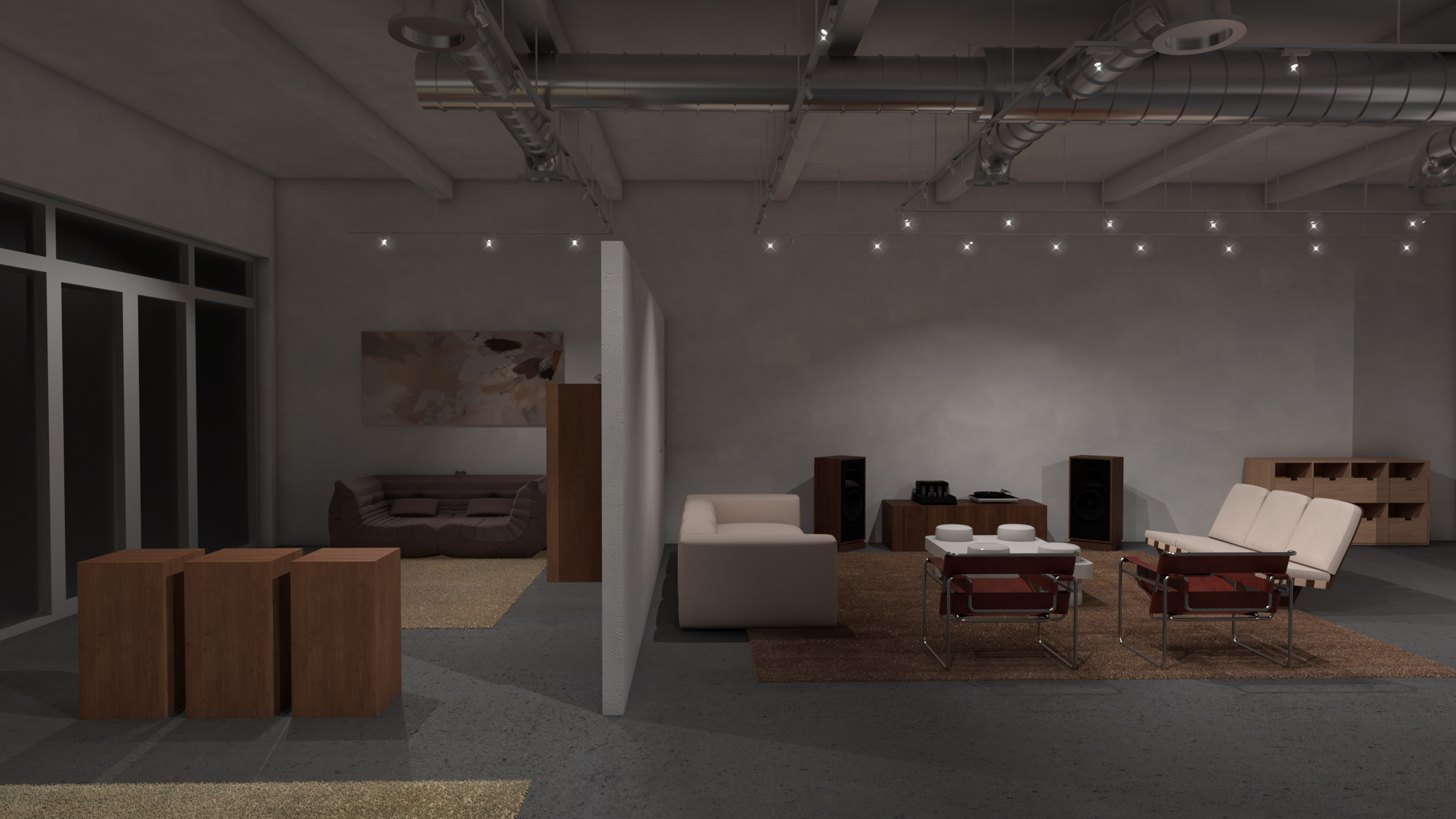
Constructing the Style: Materials and Elements
The industrial minimalist style is characterized by a series of elements and materials that work together to create an environment that is both functional and aesthetically appealing. One of the key elements of this style is the use of open, airy spaces. Open floor plans help maintain a sense of simplicity and space, which is fundamental to minimalism.
Materials used in this style are often raw and unrefined, celebrating their natural form and authenticity. Materials such as metal, untreated wood and concrete are common in industrial minimalist decor. These materials are not only functional and durable, but also add a unique texture and depth to the space, bringing warmth and character.
As for colors, the industrial minimalist style favors a neutral palette. Whites, blacks and grays tend to dominate spaces, complemented by the natural colors of the materials used, such as the brown of wood and the gray of metal and concrete. This color palette helps keep the space clean and cohesive, allowing the materials and textures to shine without being overwhelming.
Furniture and accessories in an industrial minimalist space are usually simple and functional. Decorative elements are kept to a minimum, avoiding clutter and keeping the focus on the materials and architecture of the space. Statement pieces, such as industrial lamps or a large, bold piece of art, are used strategically to add visual interest without overloading the space.
Practical Tips from our Professionals to Implement it
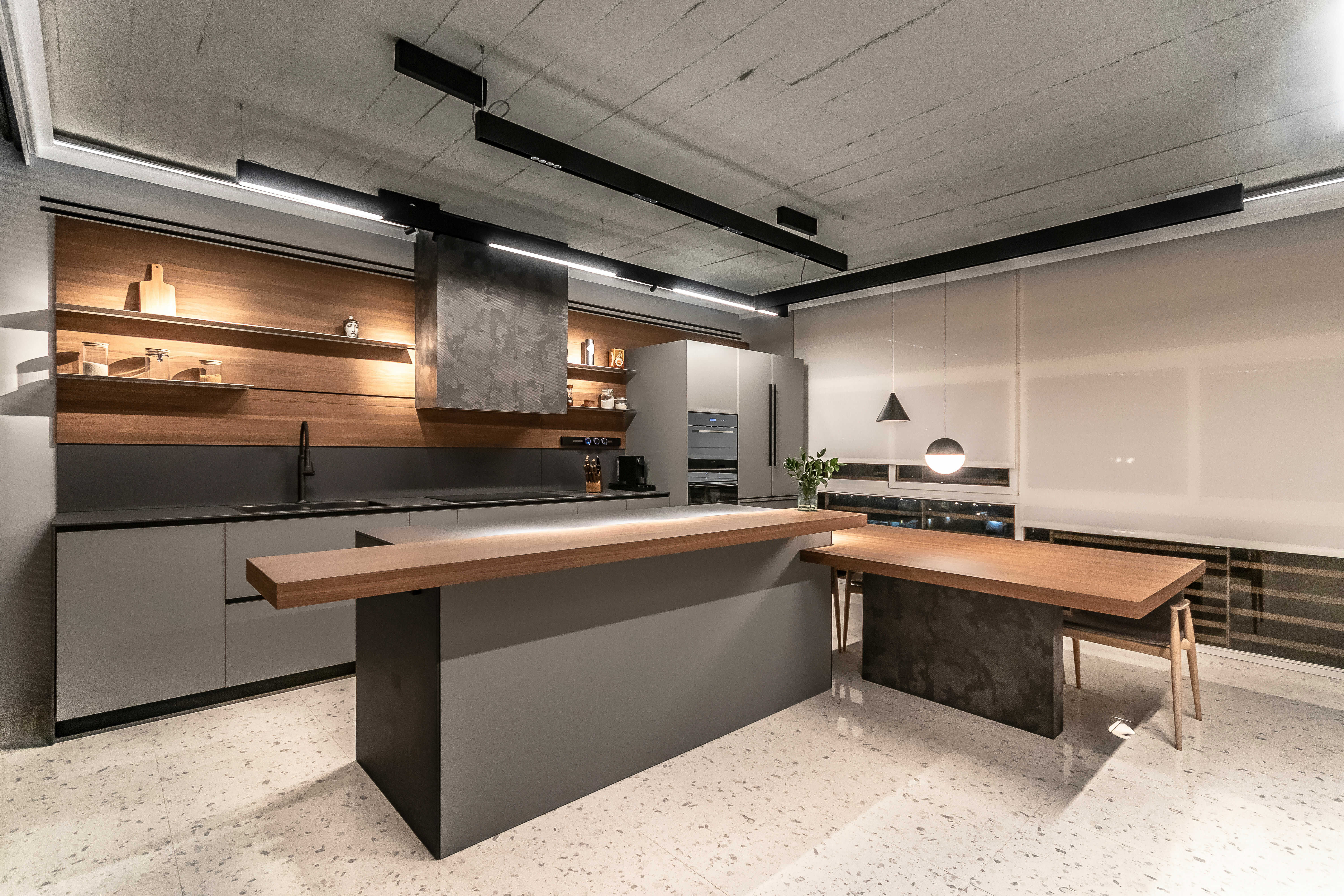
Space-Defining Furniture
Furniture plays a crucial role in defining industrial minimalist style. Opt for pieces that encapsulate sturdiness and simplicity, such as metal tables, unfinished wood chairs and leather sofas. Furniture should be functional and preferably clean lines and simple shapes, allowing the materials and construction to speak for themselves. Using multifunctional furniture can also help keep the space uncluttered and organized, adhering to minimalist principles.
Decorative Details with Purpose
Accessories and décor should be selected carefully to complement and enhance the space without causing clutter. Elements such as industrial lamps, metal shelving and black and white artwork can add character without deviating from the style. Accessories can also be an opportunity to introduce textures and materials that complement the industrial elements, such as jute rugs or linen cushions.
Strategic Purchasing for Authentic Design
Take advantage of thrift stores and garage sales to find unique pieces with history and character. These places can be excellent sources for affordable furniture and accessories, allowing you to incorporate authentic and unique elements without spending a fortune. Also, consider restoring or modifying pieces to suit your needs and style.
Exploring Visual Richness through Colors and Textures
Keep a neutral color palette as a base, allowing materials and textures to take center stage. Neutral colors help keep the space cohesive and focused on the industrial elements. As for textures, don’t be afraid to mix different materials such as wood, metal and concrete to create a rich and visually interesting environment. Textures can add warmth and soften the harsher industrial elements, helping to create a balanced and welcoming space.
As we conclude our exploration of industrial minimalist style, it is clear that this design approach is not merely a passing trend, but a deeply rooted aesthetic philosophy that celebrates simplicity, functionality and the authenticity of materials. Through careful furniture selection, a meticulously curated color palette and a savvy shopping and decorating strategy, it is possible to transform any space into a haven of industrial minimalist elegance.
This style, with its ability to fuse the raw with the refined, offers a versatility and enduring relevance that can adapt and evolve with the changing dynamics of life and design trends. By embracing the principles of industrial minimalism, you open a door towards creating spaces that are not only visually stunning, but also deeply resonant with a sense of purpose and clarity.
OPEN SHOWERS: DELVE INTO THE APPLICATION OF THIS INNOVATIVE BATHROOM COMPONENT.
NEWS Open showers: delve into the application of this innovative bathroom component.On numerous occasions, emphasis has been placed on the drastic evolution that some key spaces in the home, such as the bathroom, have undergone; becoming an authentic sanctuary of...
INNOVATION AND ADAPTABILITY: REDEFINING THE HOTELS OF THE FUTURE
In the dynamic world of hospitality, hotels are constantly evolving to meet the expectations of modern travelers. Explore with us how advanced technology and innovative design approaches are transforming the guest experience.
4 EFFECTIVE STRATEGIES FOR IMPROVING ACOUSTICS IN THE HOME
Residential architecture aims at the constant search for improvement in the quality of life of the individual, through innovative techniques that satisfy absolutely all their needs. That said, sound plays a crucial role in this scenario of comfort; and it is imperative to address strategies that appease the noise traffic and envelop the home in a serene atmosphere.
